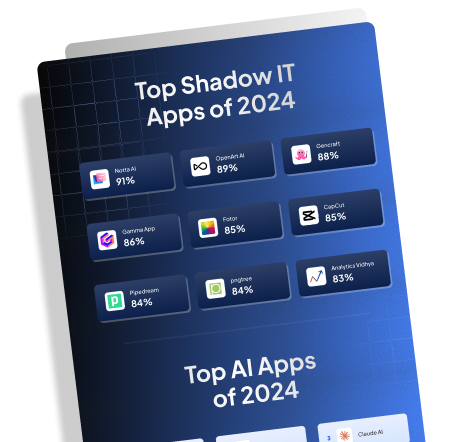Identity Governance and Administration (IGA) is a comprehensive approach to managing digital identities within a business environment. It enables businesses to enforce access control policies, facilitate user provisioning and implement role-based access control. IGA encompasses identity lifecycle management, privileged access management, and identity risk management within an overarching identity governance framework.
But what does the optimal identity management solution look like in an ever-evolving tech landscape?
It’s not just about having robust identity governance tools. The best solution embraces identity governance compliance, tackles identity governance challenges head-on with thoughtful implementation, and ensures a positive identity governance user experience. Not forgetting, analytics become crucially valuable to refine the identity governance process, from highlighting pertinent audit findings to optimizing best practices. In conclusion, a successful IGA solution is capable of accommodating various identity governance use cases without compromising on security or efficiency.
Note: Torii’s SaaS Management Platform offers stellar Identity Governance and Administration. Its robust tools provide full shadow IT visibility, automate application lifecycles, and proficiently manage SaaS expenses and contracts. Find more here.

What Are Some Examples of Identity Governance and Administration?
- User Provisioning: This typical IGA task involves managing user access to systems and data. This example is nuanced because it’s both granting and withdrawing access, sometimes requiring real-time responsiveness.
- Access Reviews: Regular audits of individual access rights reduces risk. This is a unique situation where thorough reporting is key to uncovering any unnecessary or outdated privileges.
- Role-Based Access Control (RBAC): Assigning access according to roles reduces time spent on permissions management. The challenge here lies in accurately defining and updating roles as per organizational needs.
- Single Sign-On (SSO): Simplifying user access with SSO can enhance security but entails meticulous initial setup.
- Torii: This SaaS Management platform offers IGA capabilities like access management, app insights, and usage tracking which provide valuable insights for IT professionals managing multiple SaaS applications. The uniqueness lies in its intuitive UX, automation, and ability to accommodate rapidly evolving SaaS landscapes.
Best Practices for Identity Governance And Administration
- Develop an Identity Governance Framework: Begin by establishing a clear identity governance framework. This should outline your goals, the principles you will follow, and the specific processes for managing user identities, like user provisioning and identity lifecycle management.
- Implement an Identity Management Solution: Utilize a powerful tool like Torii SaaS Management Platform. It helps discover Shadow IT, automate SaaS operations, and offers visibility over SaaS expenditures, facilitating efficient identity management.
- Craft Role-Based Access Control Policies: Detail who has access to what resources based on their job role. Role-based access control simplifies user provisioning and makes the identity governance process more efficient.
- Prioritize Privileged Access Management: Limit who has privileged access to your system. Manage these special user privileges vigilantly to avoid unauthorized access and security breaches.
- Establish Identity Risk Management: Identify potential threats and vulnerabilities with identity governance analytics. Regularly review and enhance your access control policies based on these insights.
- Leverage Identity Governance Tools: Make use of tools for user provisioning, privileged access management, identity lifecycle management, and identity risk management. Torii, for instance, even allows IT professionals to build custom plugins and integrations for their cloud apps.
- Regular Identity Governance Audit: Conduct periodic audits to ensure regulatory compliance and to detect any discrepancies. Use this data to refine your identity governance framework and policies.
- Manage Identity Governance Documentation: Maintain thorough documentation of all identity governance processes. This will ease auditing, help achieve regulatory compliance, and serve as a reference guide to resolve any identity governance challenges.
- Improve Identity Governance User Experience: Pay attention to the user experience. The more intuitive the interface, the easier it will be for users to interact with the identity governance platform.
- Utilize Identity Governance Use Cases: Study common use cases to understand possible scenarios in identity governance implementation. Apply these learning points to improve your identity governance best practices.
The right combination of a robust framework, identity governance tools, and a powerful platform like Torii can make managing corporate SaaS applications smoother and more efficient.
Tools for Success: Identity Governance And Administration
- Microsoft Azure Active Directory: Cloud-based identity and access management solution.
- Okta: Offers single sign-on, multi-factor authentication, and automated provisioning.
- SailPoint: Provides identity governance solutions for managing access across all users.
- Torii: AI-powered SaaS management platform designed for IT professionals.
Going Deeper: Related Terms
Identity Governance And Administration is a complex topic with various interconnected concepts. To help you dive deeper into this fascinating area, here are five related terms:
- User Provisioning: Automates the process of granting or revoking access to systems and applications for individual users.
- Role-Based Access Control (RBAC): Assigns permissions to users based on their job roles and responsibilities, making access management more streamlined.
- Access Certification: Periodically checks and verifies the access rights of users, ensuring compliance and mitigating security risks.
- Single Sign-On (SSO): Allows users to access multiple applications with a single set of credentials, enhancing convenience while maintaining security.
- Privileged Access Management (PAM): Centralizes and controls access to critical systems and information, reducing the risk of unauthorized access.
This list is just the beginning. For a comprehensive glossary of tech terms, check out our directory at https://www.toriihq.com/glossary. Stay curious and keep exploring!
Frequently Asked Questions
Q: What is Identity Governance and Administration (IGA)?
A: Identity Governance and Administration (IGA) is a framework that enables organizations to manage and secure digital identities and their access to resources within an enterprise.
Q: Why is Identity Governance and Administration important?
A: Identity Governance and Administration is important because it helps organizations maintain compliance with regulations, minimize security risks, streamline user access management, and improve overall operational efficiency.
Q: What does Identity Governance and Administration entail?
A: Identity Governance and Administration involves processes and tools for identity lifecycle management, access requests and approvals, role-based access control management, access certification, and identity analytics.
Q: How does Identity Governance and Administration improve security?
A: Identity Governance and Administration improves security by ensuring that only authorized individuals have access to sensitive resources, reducing the risk of insider threats, and enabling quick detection and response to security breaches.
Q: What are the benefits of implementing Identity Governance and Administration?
A: The benefits of implementing Identity Governance and Administration include improved compliance, reduced administrative costs, enhanced user experience, increased productivity, and strengthened overall security posture.






